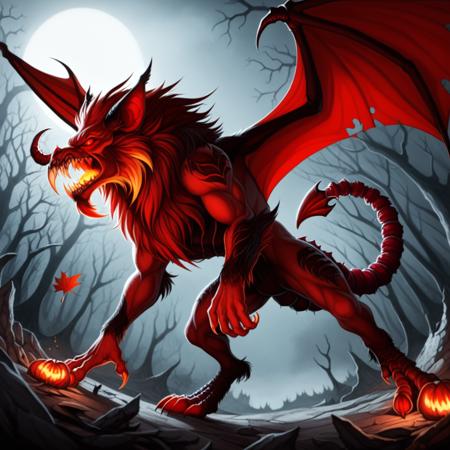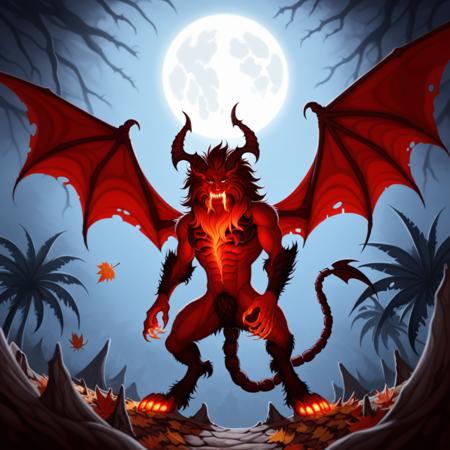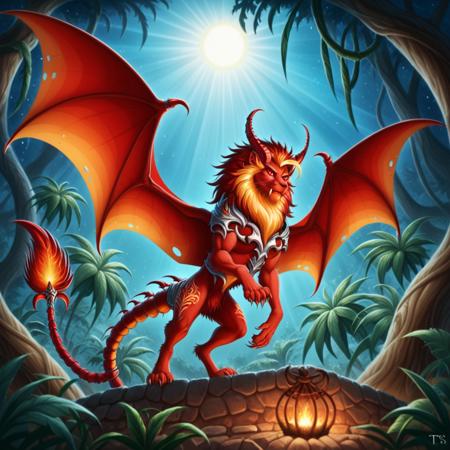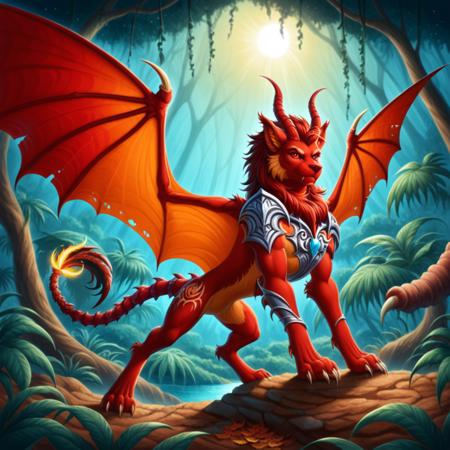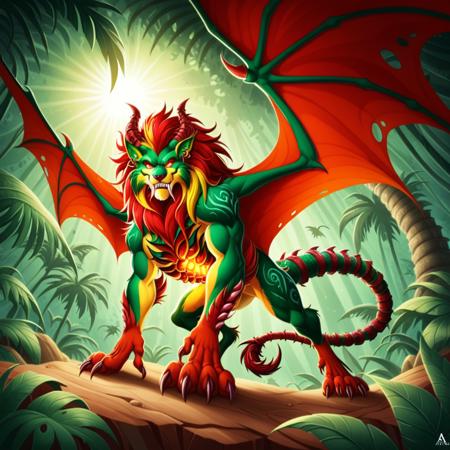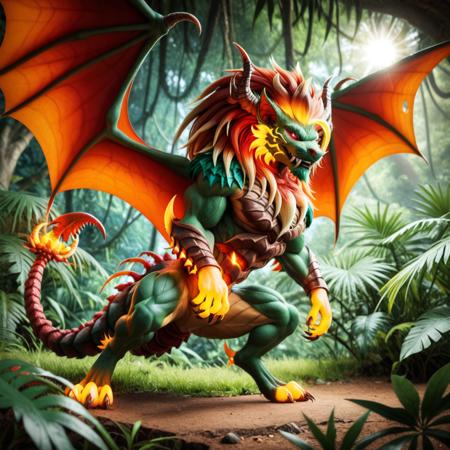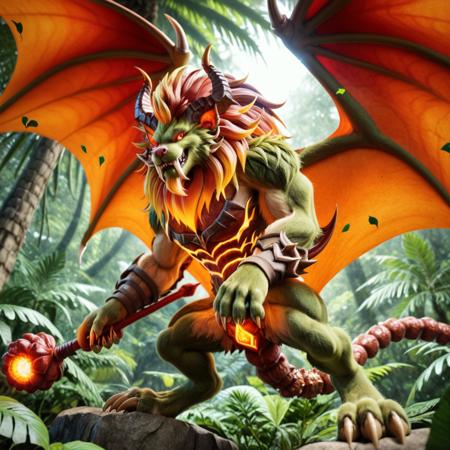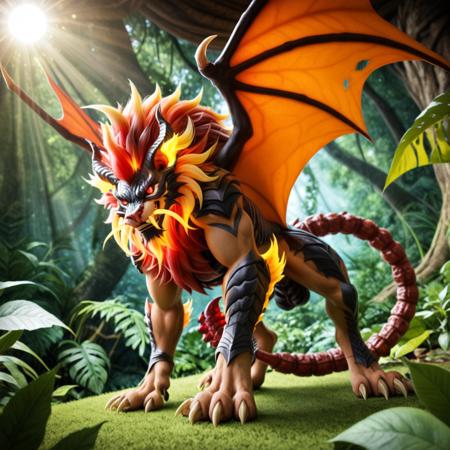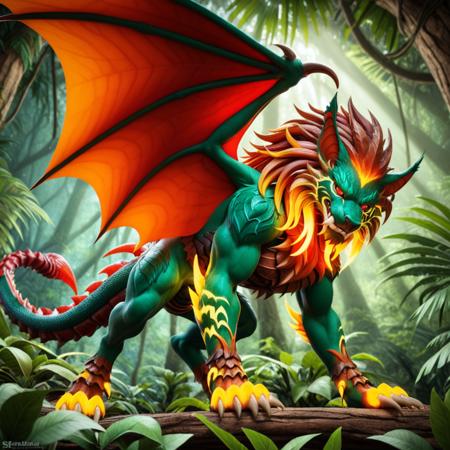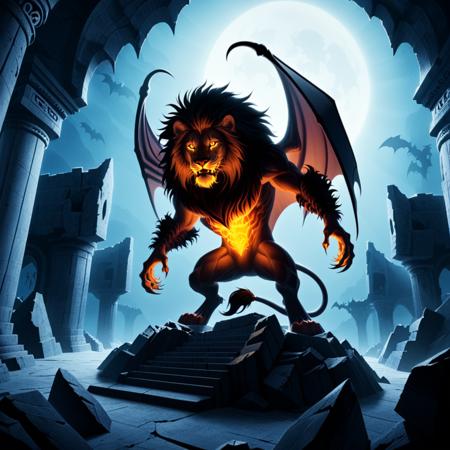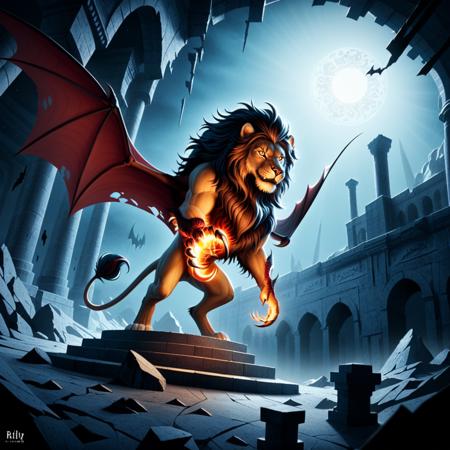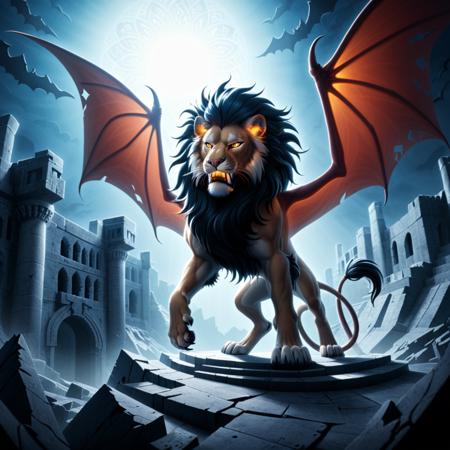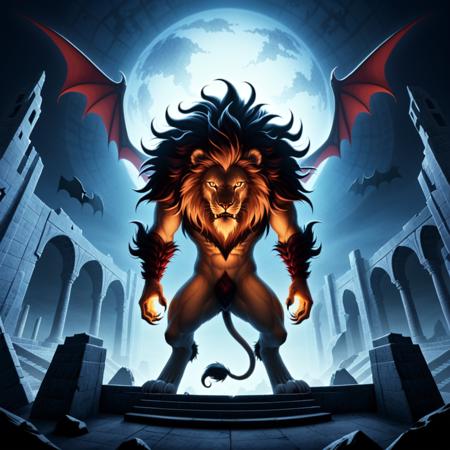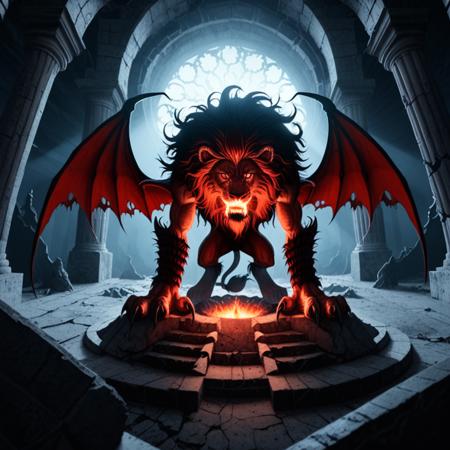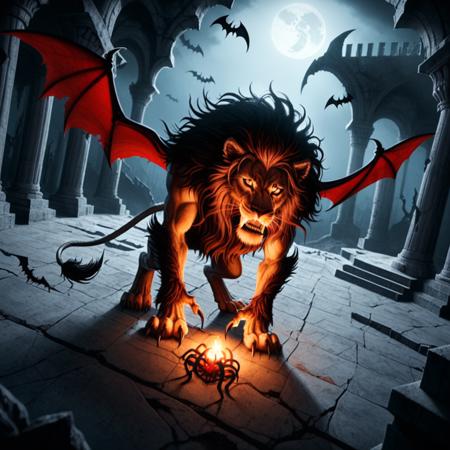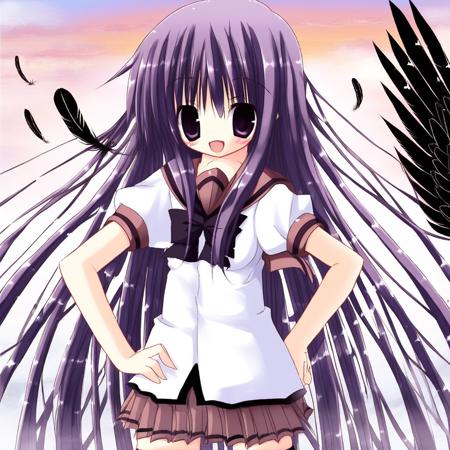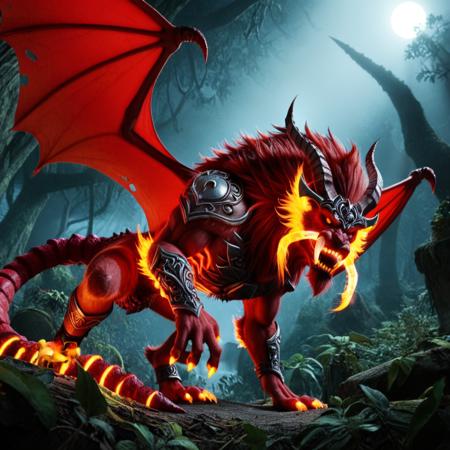
*** If you like my LoRAs, please consider supporting my creative efforts. It doesn't take much to show your love—by liking the models, posting images into the main lora page, or leaving a tip or comment to keep the creativity flowing. Civitai creators dedicate a lot of time to crafting these amazing creations, so any support, buzz, or encouragement you provide makes a world of difference. Thank you!
Manticores: Mythical Creatures of Legend and Danger
Introduction
Manticores are one of the most fearsome and enigmatic creatures from ancient mythology. Known for their terrifying appearance and lethal nature, these mythical beings have captivated the imaginations of people for centuries.
Origins and Mythology
Origins: The manticore originates from Persian mythology, where it was known as the "man-eater" due to its terrifying habit of devouring humans. The creature's legend spread to ancient Greece and beyond, becoming a staple of various mythological traditions.
Name: The name "manticore" is derived from the Persian word "martikhoras," which translates to "man-eater."
Appearance and Characteristics
-
Hybrid Creature: The manticore is a composite creature, combining features from multiple animals. It typically has:
-
The body of a lion, symbolizing strength and ferocity.
-
The head of a human, often depicted with sharp teeth or even three rows of teeth to devour its prey.
-
The tail of a scorpion or a dragon, equipped with venomous spikes that it can shoot at its enemies.
-
-
Wings: Some depictions include large, bat-like wings, allowing the manticore to fly and attack from the skies.
Abilities and Behavior
-
Deadly Hunter: Manticores are known for their hunting prowess. They are agile, powerful, and relentless predators, feared by both humans and other creatures.
-
Venomous Tail: The manticore's tail is one of its most dangerous features. The venomous spikes can paralyze or kill its victims, making it an even more formidable opponent.
-
Camouflage: Some myths suggest that manticores have the ability to blend into their surroundings, making them stealthy hunters and elusive targets.
Cultural Significance
-
Symbol of Fear: In many cultures, the manticore symbolizes the unknown and the terrifying aspects of nature. Its fearsome reputation made it a powerful symbol in ancient storytelling and mythology.
-
Medieval Bestiaries: During the Middle Ages, manticores appeared in bestiaries—compilations of descriptions of various real and mythical animals. These bestiaries often used the manticore as a moral lesson, warning against the dangers of the wild and the unknown.
-
Modern Depictions: Manticores continue to appear in modern literature, films, and games. They are often portrayed as formidable adversaries in fantasy settings, maintaining their status as iconic mythical creatures.
Legacy
-
Enduring Fascination: The manticore's blend of human and animal features, combined with its deadly abilities, has ensured its place in the pantheon of legendary creatures. It continues to inspire fear and awe in those who encounter its stories.
-
Cultural Impact: From ancient myths to contemporary fantasy, the manticore remains a potent symbol of the dangers that lurk in the unknown, reminding us of the balance between humanity and the wild.
Conclusion
Manticores are more than just mythical creatures; they represent the primal fears and fascinations of human imagination. Their legacy endures, captivating new generations with tales of their ferocity and mystery.
描述:
训练词语: mantik
名称: manticores- sdxl1.0.safetensors
大小 (KB): 166546
类型: Model
Pickle 扫描结果: Success
Pickle 扫描信息: No Pickle imports
病毒扫描结果: Success

